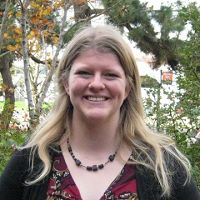Lybrand & Rasmussen, 2012
Linking soil element-mass-transfer to microscale mineral weathering in the Santa Catalina Critical Zone Observatory
Lybrand R. A. and Rasmussen C. (2012)
Abstract EP42D-03 presented at 2012 Fall Meeting, AGU, San Francisco, Calif., 3-7 Dec (Talk)
-
Calhoun, Catalina-Jemez, COLLABORATOR
-
Catalina-Jemez, INVESTIGATOR
Abstract
Soil chemical denudation and mineral transformation contributes significantly to landscape evolution and to our understanding of water and carbon cycling across ecosystems. The main objective of this research was to couple the chemical composition of bulk soils to the elemental changes associated with microscale mineral transformations to better understand climatic controls on soil development in semi-arid and sub-humid environments. Soil profiles to the depth of refusal and representative parent rock samples were collected from granitic terrain across the Santa Catalina Mountain Critical Zone observatory (SCM-CZO) environmental gradient that spans desert scrub to mixed conifer forest ecosystems. Bulk elemental chemistry, including major, minor, and trace elemental constituents, was determined by x-ray fluorescence (XRF) for all samples and microscale weathering patterns were quantified using electron microprobe analyses. From these data, elemental mass-transfer percentages were calculated and normalized to the parent rock materials using Na and Zr as the mobile and immobile inputs, respectively. Chemical depletions of Na, a proxy for plagioclase feldspar weathering, was observed in both the desert scrub and mixed conifer ecosystems. Na chemical loss was most consistent with depth and across soil pedons (n = 4) in the mixed conifer system where sodium depletion averaged 46% (± 5%) relative to the parent material, providing evidence for loss of plagioclase to chemical weathering. Electron microprobe analyses of surface and subsurface soils at the mixed conifer site revealed a significant decrease in sodium weight percent from the unaltered regions of the grains (Na of ~7-8%) to fully transformed areas of the grains (Na of ~0.2-0.3%) located in joint fractures and at grain edges. In contrast, soils from the desert scrub site exhibited highly variable Na loss in the bulk soils with Na depletion ranging from 23 to 50%. Electron microprobe analyses of desert scrub soils indicated incomplete mineral transformation where sodium weight percents spanned ~7% in un-altered grain centers to ~4% in grain fractures and edges. Backscattered electron (BSE) images support these patterns where more completely transformed minerals were observed in the mixed conifer soils compared to incomplete transformations in soils at the desert scrub site. These results document an important link between bulk soil element loss and microscale weathering processes with increased chemical denudation and mineral transformation in wetter, higher elevation mixed conifer ecosystems.
Citation
Lybrand R. A. and Rasmussen C. (2012): Linking soil element-mass-transfer to microscale mineral weathering in the Santa Catalina Critical Zone Observatory. Abstract EP42D-03 presented at 2012 Fall Meeting, AGU, San Francisco, Calif., 3-7 Dec (Talk).
Explore Further


